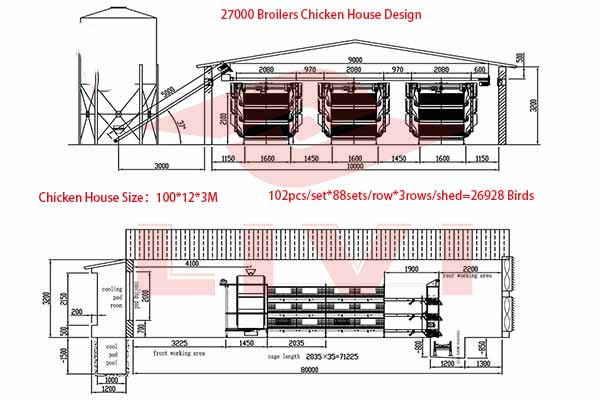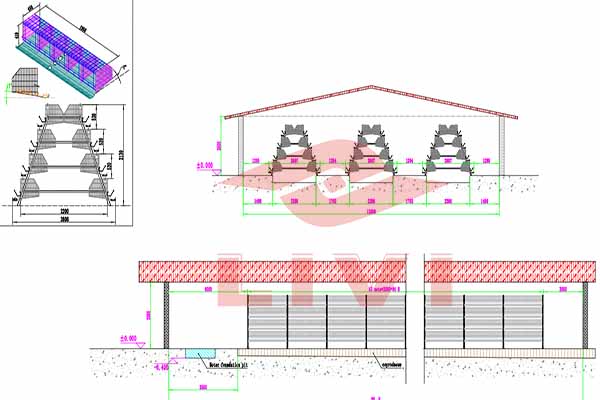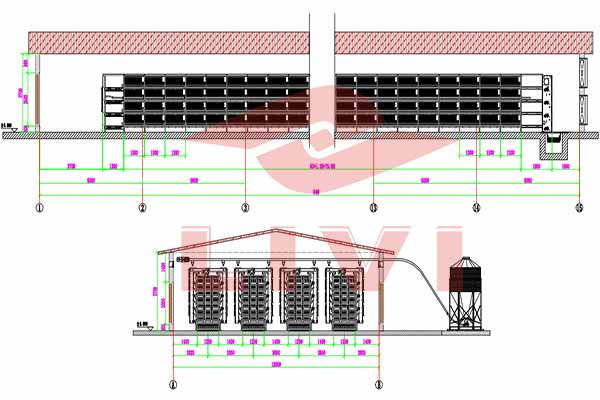Poultry Feeding System for 500,000 Chickens in Kenya: A Comprehensive Guide
Introduction
With the growing demand for poultry products in Kenya, setting up a large-scale chicken farming operation can be a profitable venture. One of the critical components of a successful poultry farm is an efficient feeding system. In this article, we will discuss the design and implementation of a poultry feeding system for a 500,000 chicken farm in Kenya.
System Design
To ensure that the feeding system can cater to the needs of 500,000 chickens, it is essential to consider the following factors:
- Feed Storage Capacity: A storage capacity of at least 10,000 tons of feed is recommended to supply the farm for several months.
- Feeding Rate: The feeding rate should be optimized to provide 2.5% of the chickens’ body weight in feed per day.
- Automation: An automated feeding system is crucial for efficiency and accuracy.
- Water Supply: Ensure a constant supply of clean water, which is essential for chicken health and feed intake.
Feeding System Components
The following components are essential for a poultry feeding system for 500,000 chickens:
- Feed Storage Silos: Store the feed in large silos to avoid spoilage and reduce handling.
- Feed Hopper: Distribute the feed to the chickens through a feeding hopper.
- Feed Distributor: Automatically control the feeding rate and distribution of the feed.
- Watering System: Provide a continuous supply of clean water through nipple drinkers or fountains.
Implementation
When implementing the feeding system, consider the following steps:
- Assess the farm’s layout and determine the optimal location for the feeding system.
- Install the storage silos, feed hopper, distributor, and watering system.
- Set up the control panel to manage the feeding and watering processes.
- Train the staff on the operation and maintenance of the feeding system.
Benefits
A well-designed poultry feeding system offers several benefits:
- Improved Efficiency: Automation reduces labor costs and ensures consistent feeding.
- Enhanced Health: Clean feed and water prevent diseases and improve growth rates.
- Profitability: Efficient operations lead to higher yields and increased profits.
Conclusion
Investing in a poultry feeding system for a 500,000 chicken farm in Kenya is a crucial step towards achieving success in the poultry industry. By carefully designing and implementing the system, you can ensure efficient operations, improved chicken health, and increased profitability.
For more information and a free, customized poultry feeding system design and equipment quote, please leave a comment below or contact us at LIVI Machinery.





